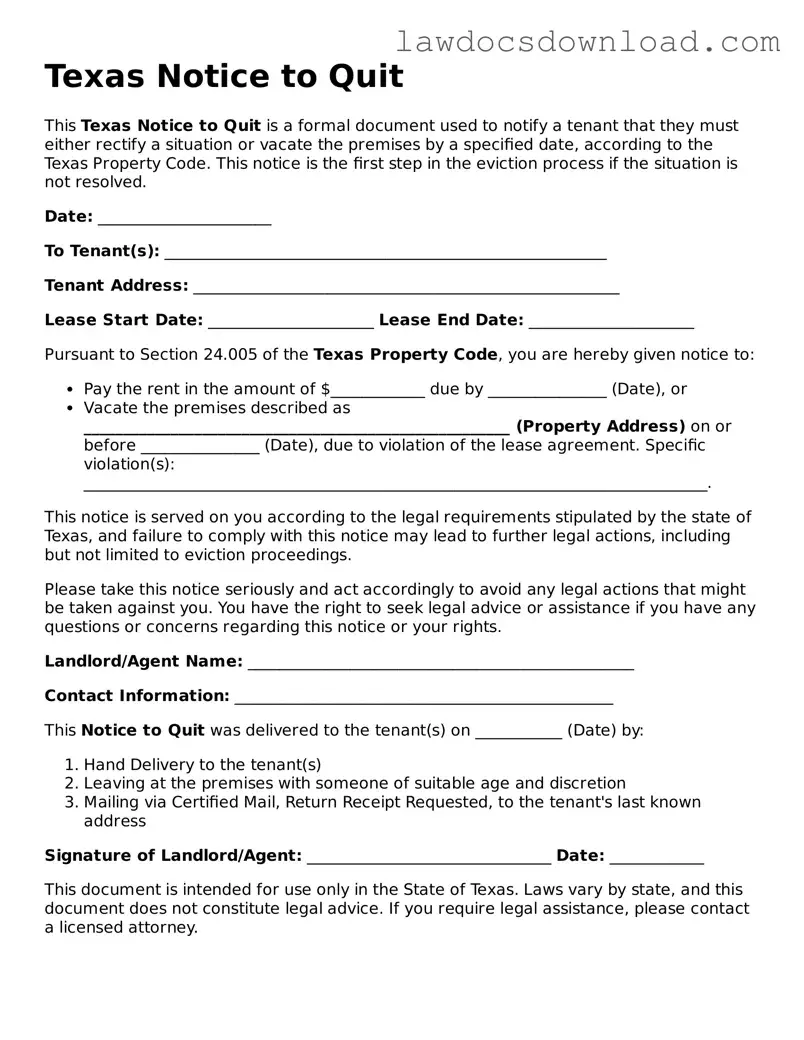Texas Notice to Quit
This Texas Notice to Quit is a formal document used to notify a tenant that they must either rectify a situation or vacate the premises by a specified date, according to the Texas Property Code. This notice is the first step in the eviction process if the situation is not resolved.
Date: ______________________
To Tenant(s): ________________________________________________________
Tenant Address: ______________________________________________________
Lease Start Date: _____________________ Lease End Date: _____________________
Pursuant to Section 24.005 of the Texas Property Code, you are hereby given notice to:
- Pay the rent in the amount of $____________ due by _______________ (Date), or
- Vacate the premises described as ______________________________________________________ (Property Address) on or before _______________ (Date), due to violation of the lease agreement. Specific violation(s):
_______________________________________________________________________________.
This notice is served on you according to the legal requirements stipulated by the state of Texas, and failure to comply with this notice may lead to further legal actions, including but not limited to eviction proceedings.
Please take this notice seriously and act accordingly to avoid any legal actions that might be taken against you. You have the right to seek legal advice or assistance if you have any questions or concerns regarding this notice or your rights.
Landlord/Agent Name: _________________________________________________
Contact Information: ________________________________________________
This Notice to Quit was delivered to the tenant(s) on ___________ (Date) by:
- Hand Delivery to the tenant(s)
- Leaving at the premises with someone of suitable age and discretion
- Mailing via Certified Mail, Return Receipt Requested, to the tenant's last known address
Signature of Landlord/Agent: _______________________________ Date: ____________
This document is intended for use only in the State of Texas. Laws vary by state, and this document does not constitute legal advice. If you require legal assistance, please contact a licensed attorney.
